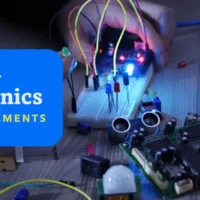How to Become a Chip Designer: Career Path, Skills, and Industry Outlook ?
- by Abhinav Kumar
- 20 October 2025
- 3 minutes read

Key Insights
- Chip design is a high-demand, intellectually challenging field at the intersection of electrical engineering and computer science, powering everything from smartphones to AI hardware.
- Successful chip designers master hardware description languages (HDLs), EDA tools, and foundational courses such as digital logic and computer architecture, often starting with an electrical engineering degree.
- The industry rewards persistence and hands-on learning, but newcomers should be aware of the field’s demanding workload and evolving skill requirements.
Did you know that today’s smartphones, game consoles, and even electric vehicles are powered by chips containing billions of transistors—each painstakingly designed by teams of engineers? As the world’s appetite for faster, smarter devices grows, so does the need for skilled chip designers. Whether you dream of working at leading companies like NVIDIA or want to build the next generation of processors, understanding the chip design career path is your first step into this dynamic industry.
Starting Your Journey: Education and Core Skills
Aspiring chip designers typically begin with a bachelor’s degree in electrical engineering, electronics engineering, or computer engineering. This foundational education covers essential topics such as digital logic design, circuit analysis, semiconductor physics, and electromagnetics. Advanced mathematics—especially differential equations and linear algebra—is critical for understanding how signals behave inside integrated circuits .
Key courses and skills include:
- Digital Logic & Computer Architecture: Learn how computers process data at the most fundamental level. Read Digital Electronics for Placements – A Step-by-Step Guide to know more.
- VLSI Design: Explore how millions of transistors are integrated onto a single chip.
- Semiconductor Physics: Understand the materials and physical principles behind chip operation.
- Hardware Description Languages (HDLs): Master languages like Verilog and VHDL, used to describe and simulate digital circuits.
- Programming & Scripting: Python and C++ are widely used for automation, testing, and tool development.
Many chip designers pursue advanced degrees (Master’s or PhD) for specialized roles, but a strong undergraduate record and hands-on experience with HDLs and EDA tools are often enough to launch a career .
You would love to read :Semiconductor Fabrication 101: All You Need to Know
Hands-On Experience: Projects, Tools, and Clubs
Industry leaders emphasize that practical skills matter as much as academic credentials. Here’s how to stand out:
- EDA Tools: Familiarize yourself with Electronic Design Automation software such as Cadence, Synopsys, or Mentor Graphics. Many universities provide access, and some vendors offer free educational versions.
- Open Source Projects: Participate in open-source chip design initiatives and use free flows (e.g., IHP’s Docker-based flows) to build your portfolio.
- Student Clubs: Join engineering clubs focused on robotics, embedded systems, or digital design. These offer networking, mentorship, and real-world project opportunities.
- Personal Projects: Design simple processors, FPGAs, or digital circuits using HDLs. Share your work on GitHub or at engineering competitions.
Courses, books, and online resources like “Computer Organization and Design” by Patterson and Hennessy are highly recommended for beginners. Gaining competence in regular expressions and scripting can significantly boost your productivity and value to employers.
You would love to read :How to Land an ECE Internship and FTE at Tesla or SpaceX: What You Need to Know ?
Industry Outlook: Rewards, Challenges, and Trends
The chip design field is booming, with roles spanning digital, analog, physical, and verification engineering. Demand is fueled by growth in AI hardware, datacenters, automotive electronics, and consumer devices . Compensation is attractive—especially in major tech hubs—with entry-level salaries often exceeding six figures at top firms.
However, the work is not without its challenges:
- Workload and Stress: Deadlines can be intense, and work-life balance varies across companies and roles.
- Office-Based Environment: Most chip design work is computer-based, involving coding, simulation, and meetings, with limited hands-on lab work (especially in digital design).
- High Barrier to Entry: Mastery of both theoretical and practical skills is required to break into the field.
Emerging trends include the rise of open-source hardware, increased use of AI in EDA tools, and a focus on low-power, high-performance chip architectures for next-generation applications. Continuous learning is essential—successful engineers stay up-to-date through journals, online courses, and professional certifications .
For those passionate about technology and problem-solving, chip design offers the chance to shape the future of computing. With perseverance, a solid educational foundation, and hands-on experience, tomorrow’s chip designers can look forward to a rewarding, impactful career.
Discover more from WireUnwired Research
Subscribe to get the latest posts sent to your email.










